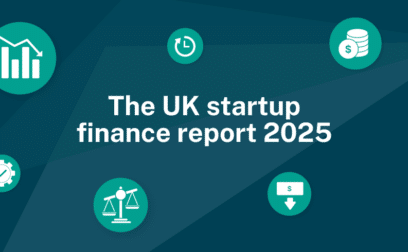By White Bear Studio, partners of Swoop
Branding is a fundamental part of the process of building a business. In this article we talk about the importance of branding, and the fundamentals of getting it right.
WHY IS BRANDING IMPORTANT?
You’ve built a great service or product. Now you need to create a brand world that underpins, identifies and sells your business to your customers. A strong brand sets you apart from your competitors and creates a memorable and identifiable impression in the minds of your customers, and for those of you who prefer pounds signs, the data backs this up financially:
- “For every £100 spent on design, companies can expect a £225 return on investment.” Design Council, The Value of Design FactFinder Report
- “Strong branded companies return 2 times the S&P 500.” Brand Finance
WHITE BEAR’S BRANDING FUNDAMENTALS
A brand is a lot like a person. Brands that stand out from the crowd do so because they intrigue people, are memorable and different. Just like society’s most iconic people, the most iconic brands are memorable.
So, how do we build a brand from the ground up? We start with the Brand Strategy, and then build the brand world visually to align with the Brand Strategy, and the strategic goals of the business.
BRAND STORY
Defining your brand story from early on sets the foundation for what your brand is going to grow into. As you scale up, your story will be written by your audience just as much as it is by you, so it’s important that strong foundations are set.
People will always connect with stories. Give your customers a story to connect with rather than being just another product sold by another company, and your audience will want to be a part of that story.
“You can’t sell anything if you can’t tell anything,”
Beth Combstock, Former CMO & GE Vice Chair.
To build your brand story, you need to decide on your purpose, mission, and vision. These form the foundation for a differentiated brand story, and a compelling proposition where founders and entrepreneurs are able to sell their idea, their business, and their USP in one succinct phrase.
A unique value proposition summarises your story in a sentence. A value proposition is a promise of value to be delivered, communicated, and acknowledged. For example, the dating app ‘Hinge’ has ‘designed to be deleted’ – a short sentence that immediately tells you the problem that they are trying to solve, and what makes them different from other dating apps, plus, you get a sense of their values. Make sure you can tell your story and proposition in a paragraph max. No one will read or listen to anything longer. It’s concise, it’s emotive and it’s memorable.
PURPOSE, MISSION, VISION
There is increasing demand from consumers for brand’s to be transparent with their values and their sense of purpose. In fact, according to Accenture 62% of consumers want companies to stand up for the issues they are passionate about and 66% of consumers think transparency is one of a brand’s most attractive qualities.
- Your brand purpose is your ‘Why’. Why is your brand doing what it’s doing?
- Your brand vision is your ‘What’. Where do you see your brand going in the future?
- Your brand mission is your ‘How’. How will your brand get there?
BRAND VALUES
Many brands default to generic brand values. Brand values are seen as a tickbox, or something to get out of the way rather than a valuable asset. Now more than ever, people want to make sure their values are aligned with the brands they choose.
Live by a set of unique values. When utilized properly, they will help you stand out, connect with your audience, and attract staff who align with your brand. Values such as honesty and Integrity are chosen with good intentions, but they are satisfiers, not differentiators. What makes you different?
TONE OF VOICE
Once your brand values have been chosen and you feel confident you can stand by them, you’ll need to develop a plan to communicate them. Set up Tone of Voice guidelines using the tone of voice pillars below. Then stick to them across all areas of communication, inside and out. Consistency is key.
Where does your tone of voice sit on various continuums from Formal to Casual, Respectful to Irreverent, Matter of Fact to Enthusiastic, amongst others? Use the four pillars of language to help you pinpoint where you sit on these scales.
OWNABILITY, MEMORABILITY, SCALABILITY
The visual assets of a brand play a huge role in helping customers understand your personality and recognize you. With creative visual assets, your brand can be unique and stick in people’s minds.
BE OWNABLE
Iconic brands own something distinct in their sector. The ownability could be a colour, a typeface, or an aesthetic. Think Cadbury’s purple, Lego’s typeface, or the Tube logo. If you can own each of these three visual categories, you’ll have an extremely ownable brand (that will be memorable and scalable too).
BE MEMORABLE
Stories have been sticking in people’s minds since caveman times. Now more than ever there’s a lot of noise, so be memorable. If your brand story, proposition and visual identity is memorable, your company will be memorable too.
BE SCALABLE
Your brand name and identity needs to bear in mind both your current and future strategy, and be flexible enough to allow for scale, growth and diversification.
NEXT STEPS
It’s important to always start with brand strategy before moving on to building a compelling brand world. In this early stage you will define your purpose, mission, vision, values, and value proposition.
Once these elements are clear, building a visual identity for your brand is the right next step. By creating a visual world for your brand, not only will you bring your strategy to life, you will create a brand that your customer is immediately invited into.
Need some inspiration? White Bear works with brands to build and develop their brand strategies. Drop them a line at https://whitebearstudio.com/swoop/ to book in an exploratory session.


































 yet? Register here!
yet? Register here!